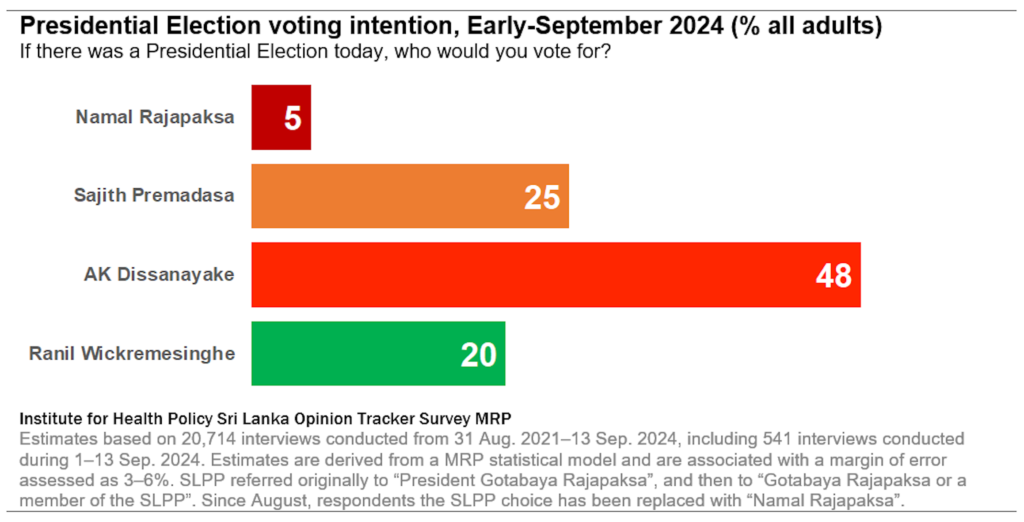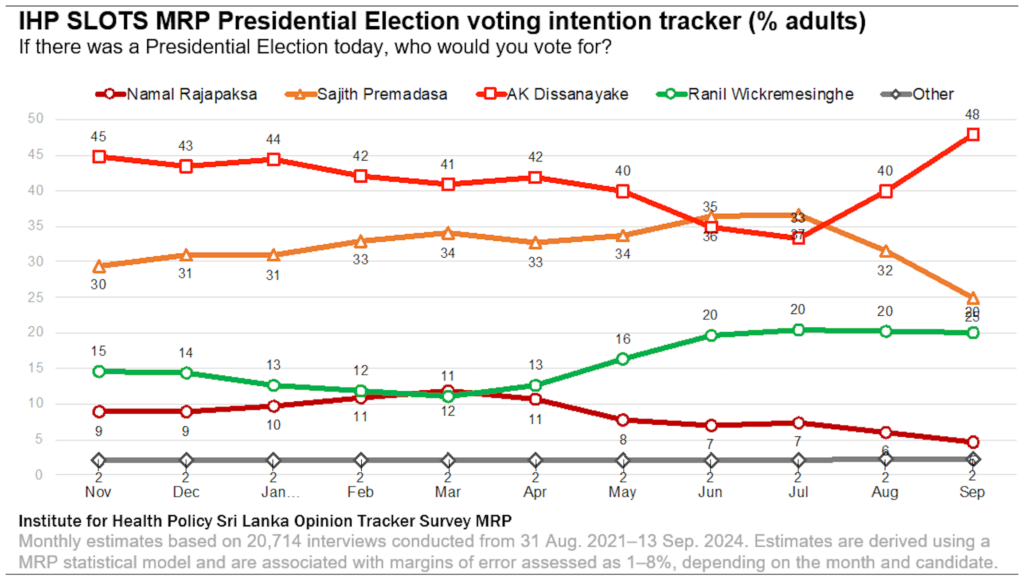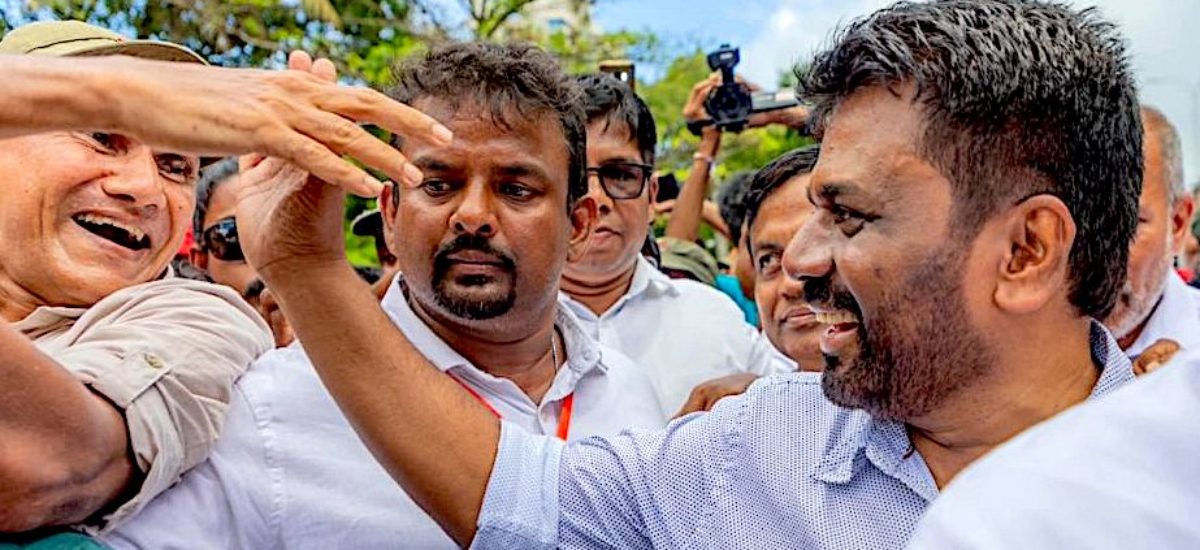Photo courtesy of NPP
Institute for Health Policy’s (IHP) SLOTS Multilevel Regression and Post-Stratification (MRP) estimates using interviews conducted to September 13 indicate that Anura Dissanayake would have won the presidential election on a count of second preference votes if the presidential election had been held in early September. In the MRP estimates of the views of all adults, Anura Dissayanake led with 48%, followed by Sajith Premadasa on 25%, Ranil Wickremesinghe on 20% and Namal Rajapaksa on 5%. These estimates were associated with a margin of error of 3–6% for the three leading candidates.

The latest IHP MRP modelling indicates that there was a strong surge in favour of Anura Dissanayake since July, when he briefly trailed Sajith Premadasa in voter preferences.
Data came from 20,714 interviews conducted from August 31, 2021 to September 13, 2024 including 541 interviews conducted in September 2024.
IHP Executive Director, Dr Ravi Rannan-Eliya, explained that IHP was forced to substantially revise its earlier model, which it had used in previous months. IHP did this to tackle a substantial rise since July 2024 of respondents over reporting voting for Anura Dissanayake in 2019. This apparent social desirability effect led the previous model to underestimate support for Anura Dissanayake as the model assumed that only 3% of the electorate cast such a vote. At the same time, this social desirability effect may be associated with respondents telling interviewers that they will vote for Anura Dissanayake when they do not plan to. IHP cautions that these two effects work in opposite directions and it is not technically possible at the current time to know with certainty which effect is more important. Despite this, IHP has revised its MRP model to assume that many respondents who report voting for Anura Dissanayake in 2019 did not do so.

Dr Rannan-Eliya commented that in almost all the MRP simulations that were done, Anura Dissanayake had a sufficient lead on the first preference votes to achieve a win once second preference choices were accounted for. He also noted that in 7% of the simulations, Ranil Wickremesinghe came second overall.
IHP’s SLOTS MRP methodology first estimates the relationship between a wide variety of characteristics about respondents and their opinions, in this case, “If there was a Presidential Election today, who would you vote for?” in a multilevel statistical model that also smooths month to month changes. It then uses a large data file calibrated to the national population to predict voting intent in each month since October 2021.
IHP’s data collection covers all districts and communities, and it uses raking to ensure that the estimation samples fairly represent the adult population with respect to age, gender, ethnicity, religion, province and district, sector of residence, relative socioeconomic status and education.
SLOTS combines interviews from a national sample of adults (ages 18 and over) reached by random digit dialling of mobile numbers, and others coming from a national panel of respondents who were previously recruited through random selection. IHP estimates voting intent using an adaptation of MRP with multiple imputation to account for uncertainties in its modelling, exploiting data from all SLOTS interviews to estimate voting in a particular month.

